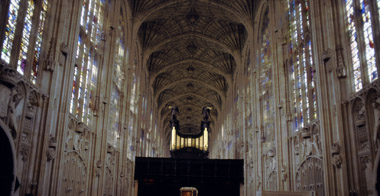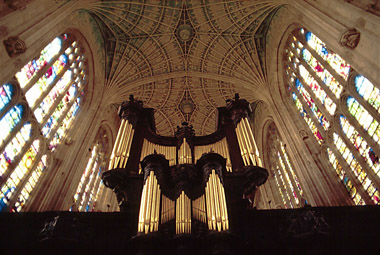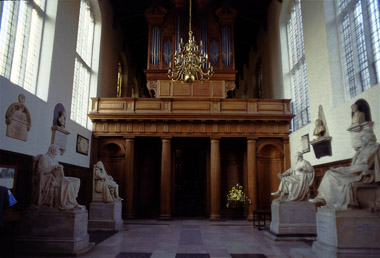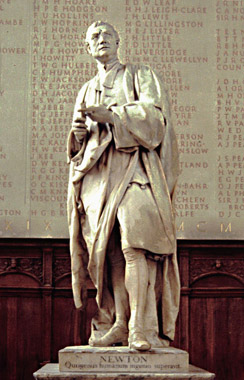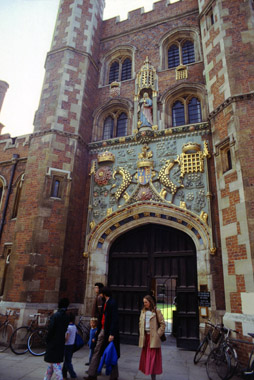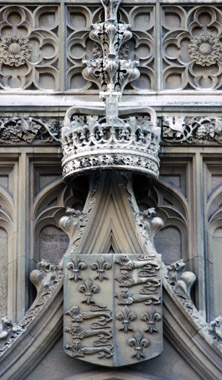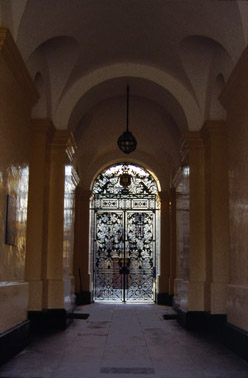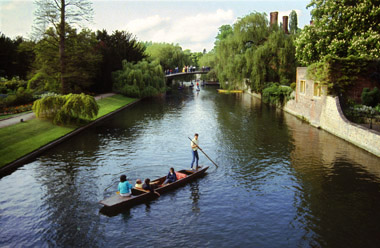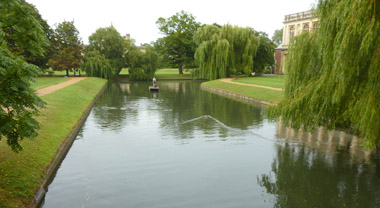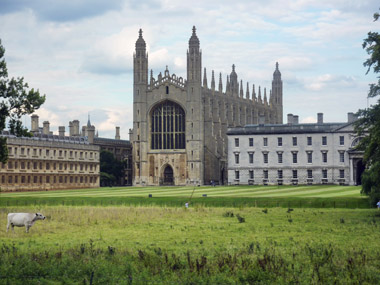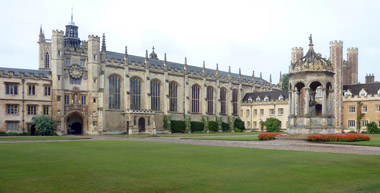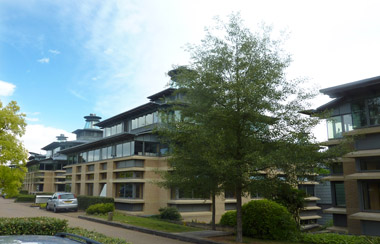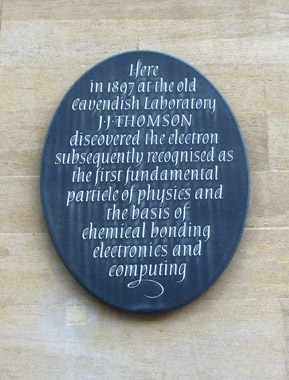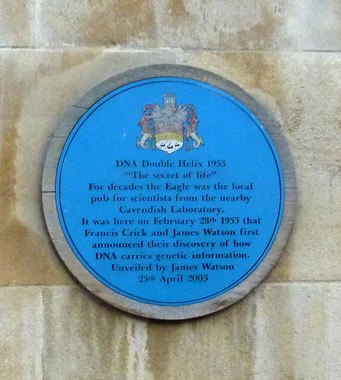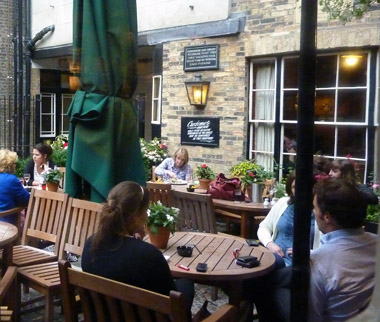|
Cambridge, England (administrative center of Cambridgeshire, population
over 100,000), is located in central England on the Cam River. Cambridge
is important as a center of learning and is the seat of the University of
Cambridge, one of the great educational institutions of world. It is also
a market center for the surrounding agricultural region and has research
industries; the chief manufactures include electronic equipment and
precision instruments. Cambridge has retained much of its medieval
appearance and has many outstanding edifices, including the Church of
Saint Bene't, a 10th-century Saxon structure; and the restored Church of
the Holy Sepulchre, one of the four round Norman churches in England.
King's College Chapel (begun in 1446) is one of the finest examples of
Gothic architecture in Europe. The city has numerous parks and gardens and
many museums and galleries. including the Fitzwilliam Museum, Cambridge
and County Folk museums. Cambridge is host to an annual arts festival and
of a midsummer fair in existence since the early 16th century. A Roman
military outpost probably existed in the vicinity of present-day
Cambridge. In Anglo-Saxon times trade between central England and
continental Europe passed over the bridge on the Cam River here. Cambridge
received its first charter in 1207.

The bridge over the Cam River in
Cambridge, England
The University of Cambridge
The University of Cambridge is the second oldest university in Great
Britain after the University of Oxford. The University is a system of
faculties, departments, and 31 independent colleges. Although the colleges
and the university per se are separate corporations, all are parts of an
integrated educational entity.
History of the University of
Cambridge
Several religious orders, including the Franciscans and Dominicans,
established houses of residence and affiliated schools in Cambridge early
in the 12th century. Students of the University of Oxford and the
University of Paris left to study in Cambridge in the 13th century. By the
year 1209 the University of Cambridge had been formed. The origin of the
colleges is traced to the associations of students, distinct from
religiously affiliated groups, who began to reside in independent hostels,
or halls. Over the centuries these halls were endowed by private
benefactors, beginning with Hugh de Balsham, Bishop of Ely, who in 1284
founded Peterhouse, the first of Cambridge's colleges. In 1318 Pope John
XXII issued a bull recognizing Cambridge as a studium generale, or place
of study; that is, a university. Five new colleges were established during
the 14th century, four in the 15th, and six in the 16th; not until the
19th century were other colleges founded. The University of Cambridge
figured prominently in the Protestant Reformation in the 16th century. The
Dutch scholar Desiderius Erasmus was a professor of Greek and divinity at
Cambridge from 1511 to 1514 and translated the New Testament from Greek
into Latin there; the religious reformers William Tyndale, Hugh Latimer,
and Thomas Cranmer were educated at Cambridge. As a result of the decrees
of King Henry VIII establishing the Church of England, the humanistic
method of study replaced the scholastic. A reaction took place, however,
during the reign of Elizabeth I (1558-1603), when Cambridge became a
stronghold of Puritanism. In 1604, early in the reign of King James I, the
university was granted the right to elect two members to the English
Parliament; the right was ended in 1949. During the 17th century the group
of scholars known as the Cambridge Platonists emerged, and, through the
influence of such faculty members as the scientists Isaac Barrow and Sir
Isaac Newton, an emphasis on the study of mathematics and natural sciences
developed for which Cambridge has been subsequently noted. Girton College,
the first such establishment for undergraduate women, was founded in 1869.
Among major changes in the second half of the 20th century were a marked
increase in the size of the older colleges, the establishment of nine new
institutions, a growing emphasis on research and advanced studies, and a
movement toward coeducation. State aid has been granted to all British
universities since 1914. English clergyman John Harvard, for whom Harvard
College (later Harvard University) was named, was a graduate of Cambridge,
as were the statesman Oliver Cromwell, the most important leader of the
English Revolution (1640-1660); the poet John Milton; the scientist
Charles Robert Darwin, who developed the evolutionary theory of natural
selection; and the economist John Maynard Keynes, 1st Baron Keynes of
Tilton. Charles, Prince of Wales and heir apparent to the throne of the
United Kingdom, studied at Trinity College (as did his forebears Edward
VII and George VI) and received a degree in June 1970.
University of Cambridge Attractions
The Fitzwilliam Museum, founded in 1816, is part of the university and
houses a renowned collection of art and archaeological objects. Science
buildings at Cambridge include the Cavendish Laboratory of Experimental
Physics, the Sedgwick Museum of Geology, and the Scott Polar Research
Institute. The University Library ranks, with the British Library and
Bodleian Library at Oxford, as one of the greatest collections in Great
Britain. King's College Chapel, a late 15th-century building, is famed for
the beauty of its architecture as well as for its choral music. The
Cambridge University Press (oldest publisher in the world), established in
1521, publishes books of scholarly and general interest.
x
|

